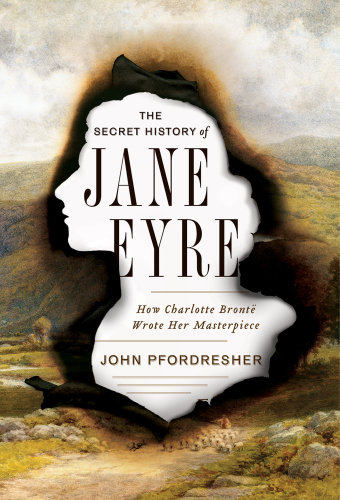
The Secret History of Jane Eyre
How Charlotte Brontë Wrote Her Masterpiece
کتاب های مرتبط
- اطلاعات
- نقد و بررسی
- دیدگاه کاربران
نقد و بررسی

February 20, 2017
Pfordresher (Jesus and the Emergence of a Catholic Imagination), an English professor at Georgetown University, suggests that Charlotte Brontë’s beloved novel Jane Eyre draws its deep emotional power from the way she refashioned her own losses and frustrations into her heroine’s triumph. This book is a narrative of that transformation, essentially a biography of Brontë as told through the events of her novel. Pfordresher makes his way with anecdotal ease through his subject’s life, generously acknowledging his debt to previous biographies, letter collections, and Brontë’s juvenilia. He doesn’t quite resolve a paradox of Jane Eyre: Brontë claimed she was not her heroine, but the novel was titled “an autobiography,” and she insisted on its truth. The psychologizing, speculation, and parallel-hunting are interesting and occasionally haunting; for example, Pfordresher finds Brontë’s dead sisters in the character of Jane’s best friend, Helen Burns. But the biographical interpretation occasionally confuses the writer with her creation and ultimately limits the novel to a wishful righting of Brontë’s childhood torments, unhappy work as a governess, and painful, unrequited passion for Constantin Heger. Fans of the novel will enjoy this behind-the-scenes investigation into Jane Eyre and the imagination of its author, but the parallels it produces aren’t enough on their own to explain the enduring fascination of Brontë’s work.

April 1, 2017
Everyone knows Jane Eyre is an autobiographical novel, but where does roman end and a clef begin?Few books feed reality hunger more than Charlotte Bronte's 19th-century masterpiece, whose deeply observant narrator speaks in such a direct voice that she seems to bear witness to lived events. As Pfordresher (English/Georgetown Univ.; Jesus and the Emergence of a Catholic Imagination: An Illustrated Journey, 2008, etc.) argues, that's because it is the work of an author who only wrote what she knew. Accepting Bronte's assertion that she never described any "feeling, on any subject, public or private," that wasn't genuine, he adroitly follows the paper trail of her letters to demonstrate that the novel draws from both actual events and deeply repressed emotions. He finds a lot of Bronte both in Jane and in Rochester's mad wife; both author and character "lived on the borderline of madness, and there are moments of anguish when its darkness takes over." As previous biographers have long noted, the horrible experience of the Bronte sisters at the Clergy Daughter's School at Cowan Bridge was closely duplicated in Lowood Institution in the novel; the parallels were so close and obvious it even caused a minor scandal. Pfordresher is more interesting when the relation between fact and fiction is less obvious, such as in the creation of Jane's classic love interest, Rochester. While the clearest real-life source appears to be a married professor whom Bronte could never have, Pfordresher sees evidence also in her doomed brother Branwell, as well as literary models such as Lord Byron's Giaour and John Milton's Satan from Paradise Lost. There's a certain literal-mindedness to Pfordresher's approach, however, and his insistence that everything in the book has traceable real-life coordinates isn't always convincing. Does Jane flee Rochester because Bronte was in some overwrought emotional state or because the story simply demanded this change of pace? On the whole, a helpful guide to the book as a Rorschach blot of a singular Romantic temperament.
COPYRIGHT(2017) Kirkus Reviews, ALL RIGHTS RESERVED.

May 1, 2017
In this book, Pfordresher (English, Georgetown Univ.; Jesus and the Emergence of a Catholic Imagination) raises many points about English novelist Charlotte Bronte's (1816&55) childhood, her family life, and her role as an author that will be familiar to her fans. He breathes new life into these biographical elements by using them to tease out an ongoing tension between the "twin sources of her remarkable achievement": her experiences and her imagination. Pfordresher suggests that the latter saved Bronte (and the fictional Jane Eyre). He also explores overlaps between her lived experiences and her heroine's story. Some of the details (such as Bronte's father's struggle with his eyesight) add new depths to passages in the 1847 novel. Overall, Pfordresher reveals that Jane Eyre is not reducible to Bronte's experiences, just as Bronte herself is much more than the author of the novel. VERDICT While not exactly an academic biography, this book will be a great addition to public libraries and prove interesting for readers curious about Bronte's social world. [See Prepub Alert, 1/9/17; "Editors' Spring Picks," LJ 2/15/17, p. 24.]--Emily Bowles, Appleton, WI
Copyright 2017 Library Journal, LLC Used with permission.

























دیدگاه کاربران